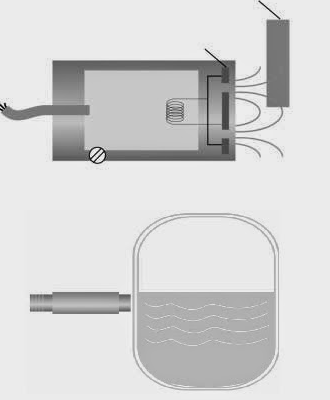Discuss about How Capacitive and Inductive Proximity Sensor Working and operation principle used in industries.
Inductive Proximity Sensor:
Inductive sensors detect metallic objects at an operating distance of up to 50mm. They are insensitive to external influences and are durable for all applications. They offer high speed, no contact sensing with an extremely long life.
Basic Mode of Operation:
The essential component of the inductive sensors is its oscillator with open coil. When a metallic object approaches the sensor, the oscillation is initially attenued and ultimately interrupted. This effect is detected by a trigger circuit and is forwarded as an output signal.
Capacitive Proximity Sensor:
Capacitive sensors detect virtually any material (paper, cardboard, plastic, etc.) at any operating distance up to 10mm. They are also suitable for detection of metallic or fluid objects. They offer high speed, no contact
sensing with an extremely long life.
Basic Mode of Operation
The heart of the capacitive sensor is an oscillator with open capacitor which generates an electrostatic field. The oscillator does not oscillate if there is no object in the vicinity. If the metallic or non-metallic object to be detected approaches, the capacitance increase and oscillation starts.
A trigger circuit detects this change and trips the output signal. Since different materials influence the electrostatic field differently, the capacitive sensors should be adjusted accordingly during installation in order to achieve optimum operability.
One typical application of capacitive sensors is the detection of fluids in non-metallic containers, e.g. in plastic tanks. Sensors adjustment suppresses any influences resulting from the tank wall.
